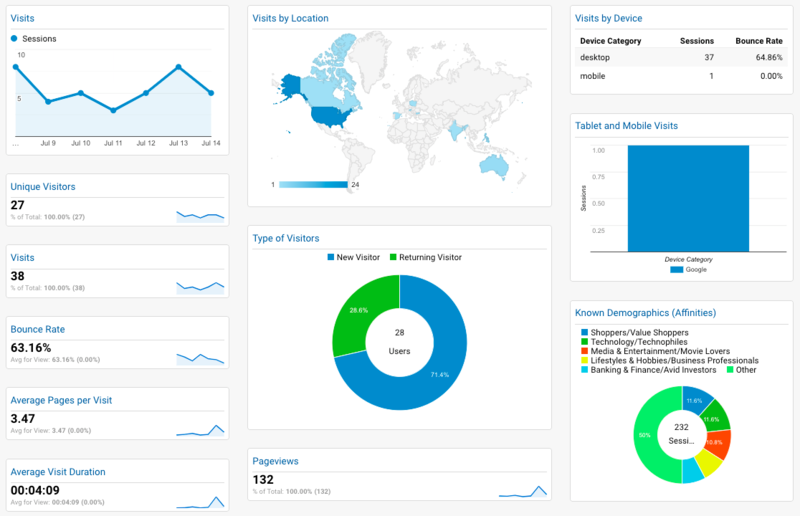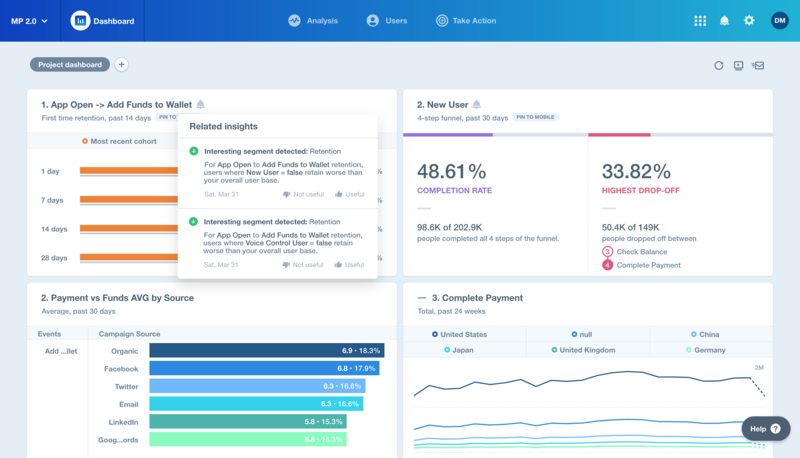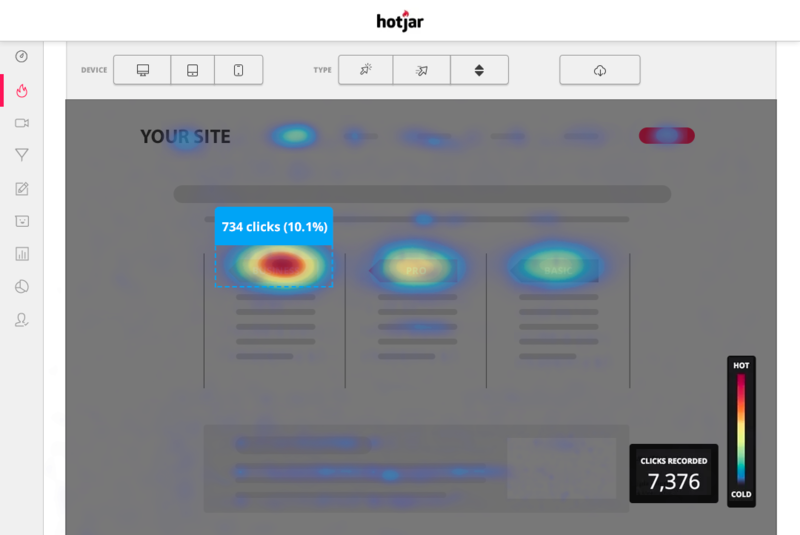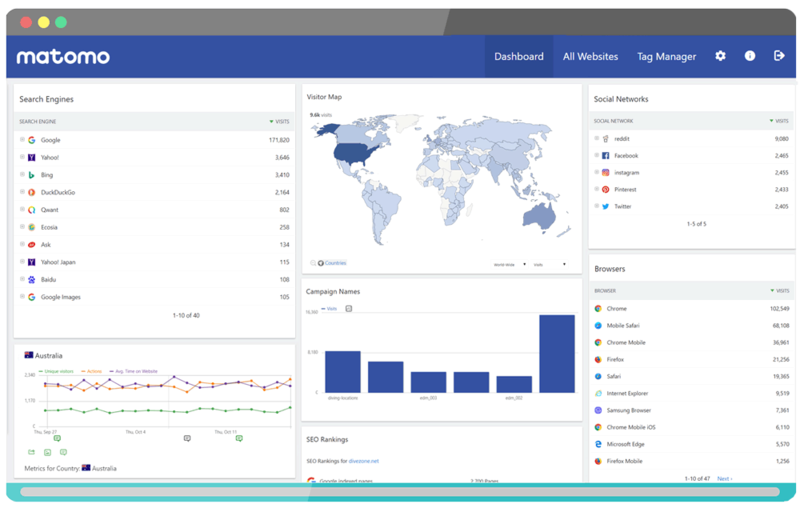What you need to know about web analytics: a guide

If your website is the heartbeat of your company’s online presence, web analytics is its trusty heart monitor. Web analytics, like a heart monitor, indicate the your website’s heart health. And while heart monitors can’t fix problems on their own, they can tell you where to start looking.
The feedback you glean from web analytics enables you to make more deliberate choices — to think strategically — about your website’s performance and how it serves your customer (and, in turn, how you might better use it to increase revenue).
Here’s everything you need to know.
Table of Contents
- What is web analytics?
- How to find the right web analytics tool for your company
- Web analytics tools
- The key metrics that web analytics tools track
- Google Analytics: The gold standard of web analytics
- The best web analytics tools for specific website needs
- Use web analytics to enhance website performance
What is web analytics?
Web analytics is a methodology that collects and analyzes website data. It’s the only measurable way to truly understand your company’s online performance. It gives a quantitative look into user behavior to help guide digital marketing initiatives and user experience on your site.
Why is web analytics important?
Web analytics give you insight into what users are doing on your website. This is important because your company’s content site is its most valuable marketing asset. It can tell your brand story, explain services, sell products, or educate potential customers. Every site has a purpose; understanding what people are doing on it and whether they’re engaging with the content is the only way to know if the site is fulfilling its purpose.
Web analytics offer an objective, quantitative look into the success of your website as a whole. The metrics collected within web analytics tools give you insight into specific pieces of your site that you’re then able to refine through strategy.
How do web analytics tools work?
Web analytics tools generally use tags that put a JavaScript snippet into the code of a specific website page. This snippet stores data and pushes it into your preferred web analytics tool. The tags are used to track how many times there is a visitor or when a link is clicked. Cookies and time stamps can also track individual sessions.
Web analytics tools then take the data from a tag, cookie, or time stamp and input it into a central dashboard that helps identify how a website is being engaged with. The only data that web analytics tools collect is related to website performance and user behavior, because it does not store any personally identifiable information such as a name.
How to find the right web analytics tool for your company
Depending on what you need, you should ask yourself (and your company) these three important questions to determine where your web analytics needs are.
1. What types of user behavior are you interested in analyzing?
Traffic sources
Analyzing your traffic sources means finding out the way in which a user landed on your website. Was it through social media? Google Ads? YouTube? The more you know about your traffic sources, the easier it will be to determine which marketing channels are the most successful for your business.
It’s also important to consider dark social when analyzing traffic sources. Dark social refers to “invisible shares that happen through channels like messengers, but also email and text messages.” For example, if you shared a cute dog video with your friend over text — that would classify as a dark social share. Essentially, they’re social shares that can be difficult to track with accuracy.
Best tools to use: Parse.ly (we built a traffic sources dashboard for the whole internet ), Google Analytics, Mixpanel, Matomo
Visitor behavior and visitor segmentation
Understanding how different visitors interact with your website is an important piece of understanding their overall behaviors. To do this successfully, you should segment your wider audience into specific groups that have shown different behaviors while interacting with your site. Some might just be there to browse different products and services, while others consistently consume blog content.
Once you’ve created your segments, you can create specific digital marketing initiatives that target those segments directly.
Best tools to use: Parse.ly (Bloomberg considers Parse.ly’s segmentation “priceless”), Google Analytics, Qualtrics, Sellution
Ecommerce
If your primary objective is to have a better understanding of how people are making purchases on your site through ecommerce, you need to be tracking conversions.
You can set up ecommerce tracking and events, which gives you insight into the number of sales transactions; ecommerce conversion rates; and other valuable metrics, such as average order value, website sessions with product views, and website sessions with add-to-cart.
Best tools to use: Parse.ly (Track conversions and content assists), Google Analytics, Shopify, WooCommerce
Content Engagement
Interested in knowing how users on your website are interacting with its content? Unfortunately, most standard web analytics tools can’t give you insight into content engagement — but Parse.ly can. That’s because Parse.ly uses a web analytics feature known as a “heartbeat” pixel.
The heartbeat pixel produces a signal that lets Parse.ly’s system know whether a user is still engaged with a page on your site or not. This is much different than Google Analytics, which can only track engagement through entry and exit events on a site page. In this sense, it’s a more accurate understanding of content engagement in a more comprehensive way.
Best tools to use: Parse.ly
Advertising Measurement
If you want to know how a specific campaign is performing, campaign tracking may be of use to you. Google Analytics and Parse.ly both have a Source/Medium report that allows you to weigh the success of different traffic sources.
If you’re running a Facebook Ads campaign and want to analyze the success once people click-through on the ad to your website, make sure you use UTM parameters. This is simple to implement, and you can even use a guide such as Google’s Campaign URL Builder. You’re essentially customizing the link URL for your ad campaign by indicating what the source and medium are. This information is then passed to Google Analytics but does not affect the link.
Then, you will be able to see this custom source and medium in your report to analyze how your Facebook Ads campaign performed in driving revenue versus organic traffic from Google on your website, for example. Parse.ly, however, can make this process even faster and simpler with built-in Source/Medium reporting functionality that is easy to access. All you need to do is click the “Campaigns” tab located in the dashboard to find detailed Source and Medium information.
Best tools to use: Parse.ly , Google Analytics
2. Who will be using the web analytics tool on a day-to-day basis?
It’s important to consider who will be the primary person in charge of using the web analytics tool at your company.
If it’s a more technical marketer who knows JavaScript, HTML, and PHP, this will impact your decision because the marketer will be able to create custom dimensions that track specific metrics. The marketer will use the web analytics tool to track metrics different from those tracked by a content creator, who may not be as familiar with all the metrics you need to be tracking and will require a more user-friendly, out-of-the-box framework with dashboards that are easy to understand.
3. How much money do you want to put toward web analytics tools?
Once you determine the functionality that you’d like to have in a web analytics tool, the next factor is price point. How much money is your company budgeting for a web analytics tool?
If your company has a tighter budget, and you’re a small business with no technical marketers or developers, you should go with out-of-the-box solutions like Google Analytics, Clicky, or Matomo.
If your budget is larger, and your company is willing to spend a lot more on a web analytics tool that offers more advanced features, you’re likely an enterprise organization. In which case, you could ask your marketing or developer team to manage an enterprise solution like Google Analytics 360 or Adobe Analytics Cloud.
Web analytics tools
In order to accurately track web analytics, you need to use a web analytics tool. The most popular web analytics tool on the market is Google Analytics, which is generally viewed as the gold standard among web analytics tools.
Out-of-the box web analytics tools
Out-of-the-box web analytics tools are appropriate for most small to mid-sized businesses and their web analytics needs. Most of these tools come equipped with standard metrics to track, and some even get a little more detailed to uncover other user behaviors that are important to site performance.
Clicky
Clicky has made a name for itself as a very user-friendly web analytics tool that comes equipped with an easy-to use dashboard. One of its standout features is the “spy” feature, which allows you to see a real-time stream of visitors and page views presently on your site.
IBM Digital Analytics
Formerly known as Coremetrics, IBM Digital Analytics prides itself on providing intuitive reporting that monitors your metrics in real time. They offer solutions for both small and large companies.
GoatCounter
GoatCounter is another user-friendly web analytics tool that specializes in tracking visits, referrers, popular pages, and searches. It boasts a beautiful dashboard and is self-hosted on the company’s own website.
StatCounter
One of the really great features of StatCounter is its live visitor feed, which can tell you exactly where a visitor is in the world and what their system stats are. If you need extra security, StatCounter can also detect fraudulent clicks on your website.
Enterprise web analytics tools
If you’re part of an enterprise company, standard web analytics tools might not be enough for your needs. The solutions mentioned above provide good out-of-the-box functionality that benefits most small to mid-sized businesses. However, enterprise organizations may require more personalized data to understand website performance based on their goals. This is where a web analytics tool that offers access to more advanced data may be valuable.
If you need extra support and access to an even more powerful suite of web analytics, you should look at one of the following options:
Google Analytics 360
Google Analytics 360 includes all of the core features of the standard version of Google Analytics, as well as more advanced features that are ideal for enterprise companies. Some of the key features of Google Analytics 360 include Roll-Up Reporting, Custom Funnels, Unsampled Reports, and Custom Tables. Keep in mind, however, that Google Analytics 360 costs a whopping $150,000 per year, and only certain companies can qualify for it.
Adobe Analytics Cloud
Adobe Analytics Cloud is another great web analytics tool for enterprise companies. While it is generally viewed as being more difficult to maintain than Google Analytics 360, it comes with plenty of upsides as well. One of the big features is Adobe Analytics Cloud’s advanced reporting functions, which simplify ad hoc analysis with an easy-to-use drag-and-drop report builder. Adobe Analytics Cloud costs anywhere from $35,000 to $350,000 per year, depending on the size and scope of your company.
The key metrics that web analytics tools track
Once you’ve chosen your web analytics tool, you can start tracking metrics that can help you gain insight into your website’s performance. Here are some of the most common metrics that web analytics tools track:
Average session duration: Average session duration tells you the average length of time sessions on your website last.
Bounce rate: Bounce rate tells you the percentage of website visitors who view one page on your site before leaving (“bouncing”).
Pageviews: Pageviews tell you the total number of pages viewed on your website. A single page view is counted when a site page is loaded by a user’s browser.
Pages/session: Pages/Sessions tell you the average number of pages viewed during a session.
Percentage of new sessions: This tells the total percentage of first-time sessions on your website over a specified period.
Sessions: An individual session measures a series of interactions that a visitor has with your site. And the Sessions metric tells you the total number of sessions carried out on your website.
Users: Users are the number of unique visitors you get on your website.
Google Analytics: The gold standard of web analytics
Google Analytics is the most widely used web analytics tool worldwide, with over 38% of the market share. There is tons of data you can extract from Google Analytics, and not only can it be customized to be as specific as you need, but it’s also completely free to use. It’s simple to set up, since most content management systems (WordPress, Squarespace, Shopify, etc.) include an integration to make this step easy. Because of that, Google Analytics is an ideal web analytics tool for every type of business, from small companies to large organizations.

The pros and cons of Google Analytics
If you’re new to web analytics, Google Analytics is a great place to start. With that in mind, there are certain pros and cons you should consider before committing to this as your web analytics tool:
Pros
- It’s free.
- It offers straightforward, intuitive dashboards that detail performance metrics.
- It offers numerous customization options (e.g., ecommerce tracking, subscriber sessions, etc.).
Cons
- All customizable features require coding knowledge. You have to code what you want Google Analytics to track that isn’t a default feature.
- Google Analytics can’t accurately track engagement metrics because it only measures entry and exit events, not what actually happens on a web page.
The best web analytics tools for specific website needs
Most of the standard web analytics tools on the market, Google Analytics included, only track general website data, but they don’t have the ability to do things like measure content engagement or heat mapping. Here are some different types of web analytics tools that are designed for specific website needs.
Content Analytics: Parse.ly
Parse.ly is an ideal web analytics tool that helps specifically measure content engagement. Parse.ly can help you track important content metrics, such as top posts, conversions by topic, and even social interaction. It helps you understand how each piece of content is performing on your website at all times.
Watch the gif for a quick tour of a Parse.ly Dashboard!
Product and User Analytics: Mixpanel
Mixpanel is a great web analytics tool that specializes in tracking customer behaviors in SaaS apps or mobile apps that have unique user behavior and engagement. That said, Mixpanel requires a lot of customization, and, as a result, a developer is often required to manage this tool.

User-Experience Analytics: Hotjar
Hotjar is a great web analytics tool that gives you detailed insight into user experience by tracking how your audience interacts with individual pages on your website. They do this through their popular heat-map feature, which can show the number of clicks different areas of an individual page receives. This shows you the hottest areas on your website for clicks, taps, and even scrolling behavior.

Open-Source Web Analytics: Matomo
Formerly known as Piwik, Matomo is a very powerful web analytics tool that has tons of capabilities and includes many elements from other tools. That said, all of the data management is your responsibility, and there is little room for error. If you implement things sloppily, all your data will be inaccurate. This is why it’s usually helpful to have developers run Matomo.

Use web analytics to enhance website performance
The ultimate goal of any web analytics tool is to improve your company’s site performance. These analysis tools give you the necessary insight to make important decisions about what elements of your site you should be paying close attention to and refining as needed.
One of the best ways to know how your site is performing is to measure its content engagement. While a web analytics tool like Google Analytics can’t do that for you, Parse.ly can. If you’re trying to scale your business and use content to attract new customers, you’ll want to take advantage of all the great content engagement insights from Parse.ly.